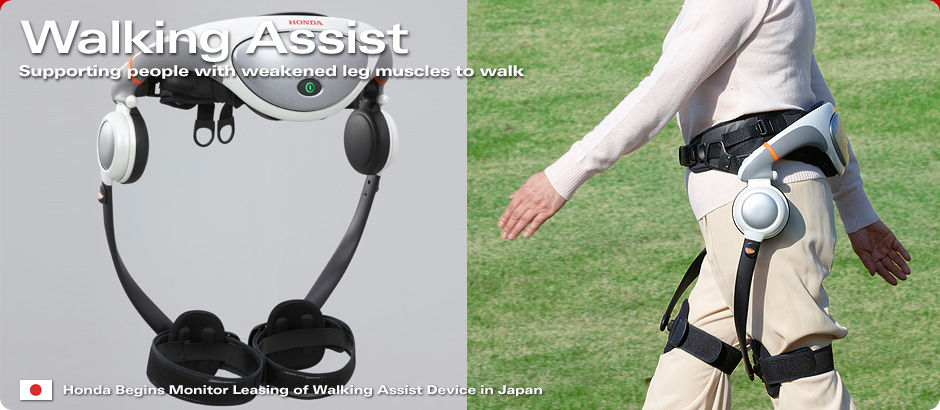Stepping Forward: Honda Revolutionizes Mobility with Walking Assist Device

Honda’s already a big name in other forms of mobility, like cars, trucks, motorcycles, and engines, so why not walking devices, too? The Japanese manufacturer has spent much of the last two decades refining technology that could revolutionize the way patients recovering from a loss of mobility get back on their feet. The Honda Walking Assist Device straps around a user’s pelvis and thighs, using motors to augment and assist their gait.
It’s essentially a robotic exoskeleton, but not only does it help physically lift patients’ legs to help them walk, it analyzes how they’re walking, giving invaluable data to their doctors about things like imbalance between the two legs or problems in the hips. Then, the machine automatically adjusts itself to the patients’ particular walking challenges.
Based on technology similar to what the company put into ASIMO, its humanoid robot, Honda’s Walking Assist Device adopts “cooperative control technology,” which was developed after completing studies on human walking. A control computer strapped around the waist activates the motors, which sit on the hips, based on data obtained from hip angle sensors. The motors then help improve the symmetry of the timing of each leg as it lifts off the ground and extends forward. The result is a longer stride so users can walk faster, steadier, and more easily.


The device is streamlined to be lightweight and compact thanks to thin motors and a small but mighty control system. The design can be worn over belts and is fully adjustable to fit a wide variety of body types. It weighs about six pounds, and it’s currently able to operate for about 60 minutes per charge.
The Honda Walking Assist Device has three training modes available. “Following mode” enables it to influence the user’s walking motions based on their own individual walking pattern; “symmetric mode” helps ensure that one leg isn’t doing more work than the other, while “step mode” helps them smoothly shift weight from the heel to the sole and the sole to the toe.
The idea is that the device will be worn by patients undergoing physical therapy, under the supervision of a medical professional. In 2013, Honda completed a clinical trial at the Rehabilitation Institute of Chicago to assess the Walking Assist Device’s ability to help stroke patients improve mobility. In 2015, the company began leasing it to hospitals and rehabilitation facilities throughout Japan. 450 units went up for sale to 50 Japanese medical facilities, enabling researchers to get a broader data sample on how the device would be used in the real world. Thanks to that information, Honda was able to continue the improvements they’ve been making to the technology since they first started working on Walking Assist in 1999.

It’s an especially exciting development for physical therapists, and anyone who is physically unable to walk. Could a new, more powerful robotic exoskeleton be developed that could help people with spinal cord injuries or defects get on their feet, too? Time will tell, but it seems like all of this research and development in medical robotics could lead to some really important breakthroughs in the coming years.




